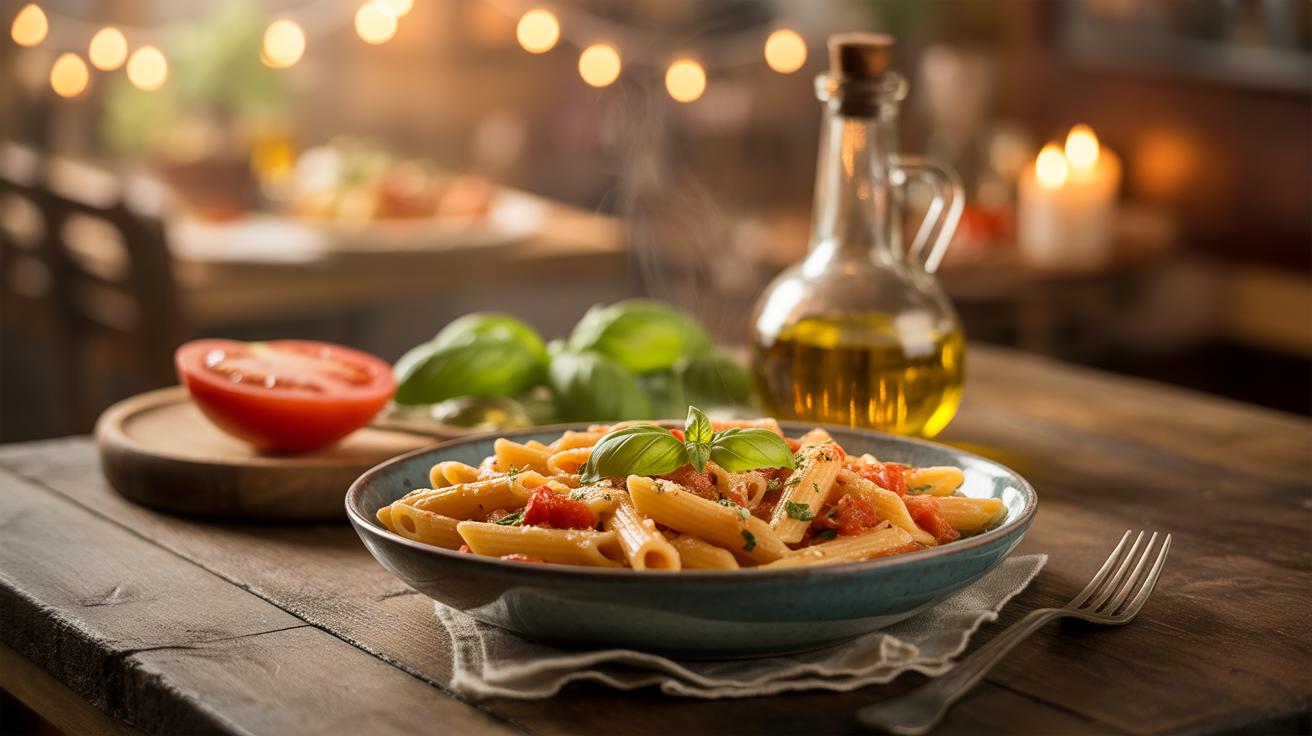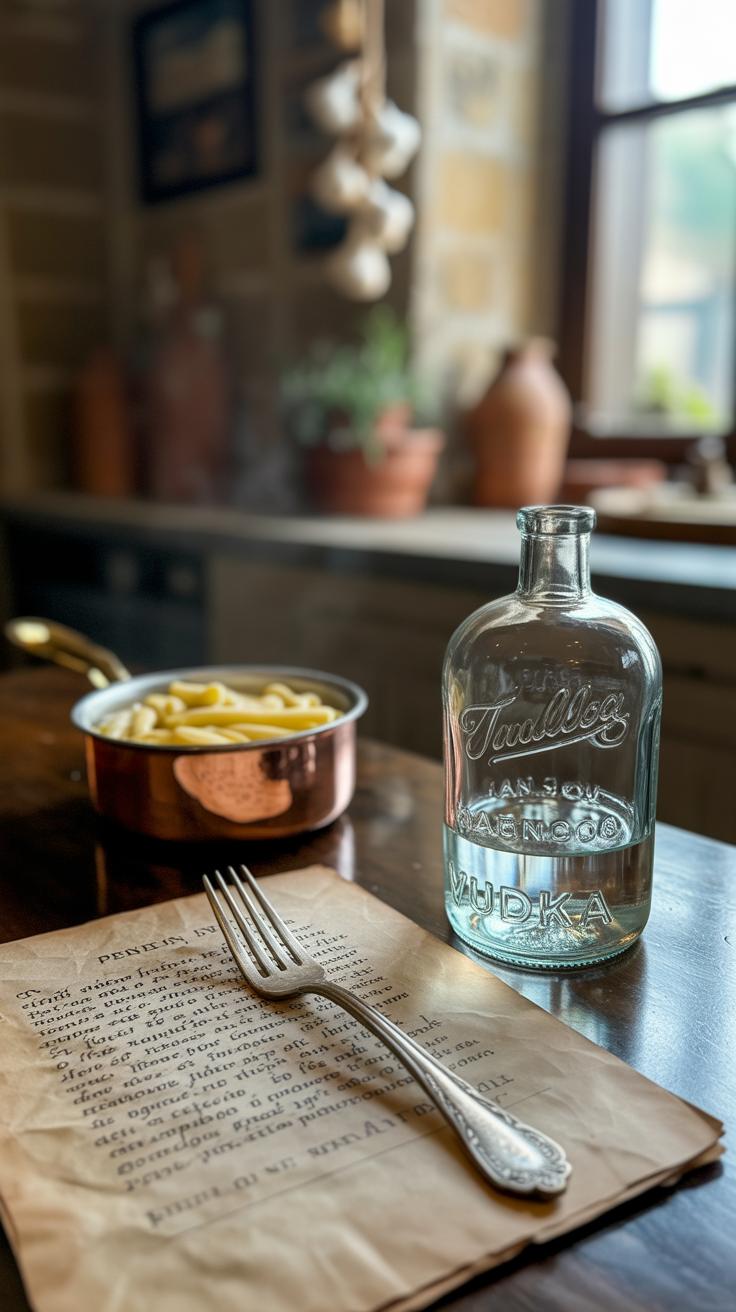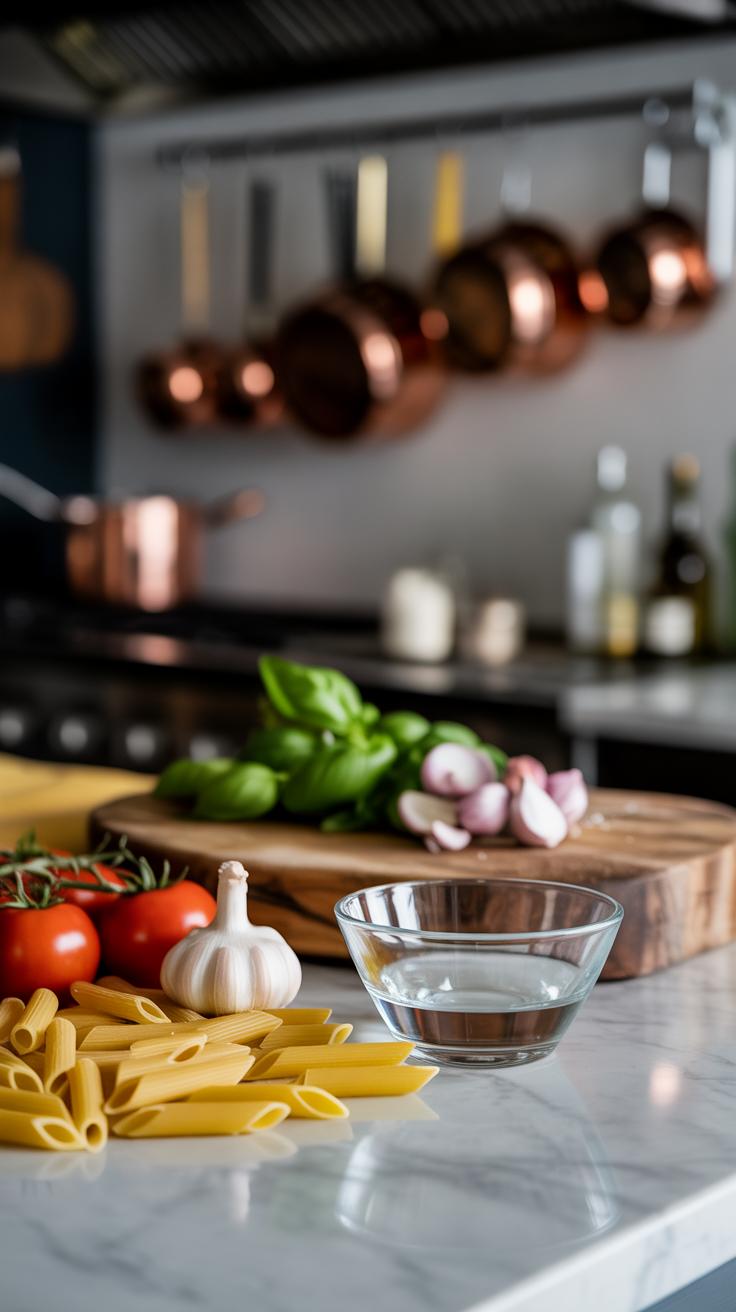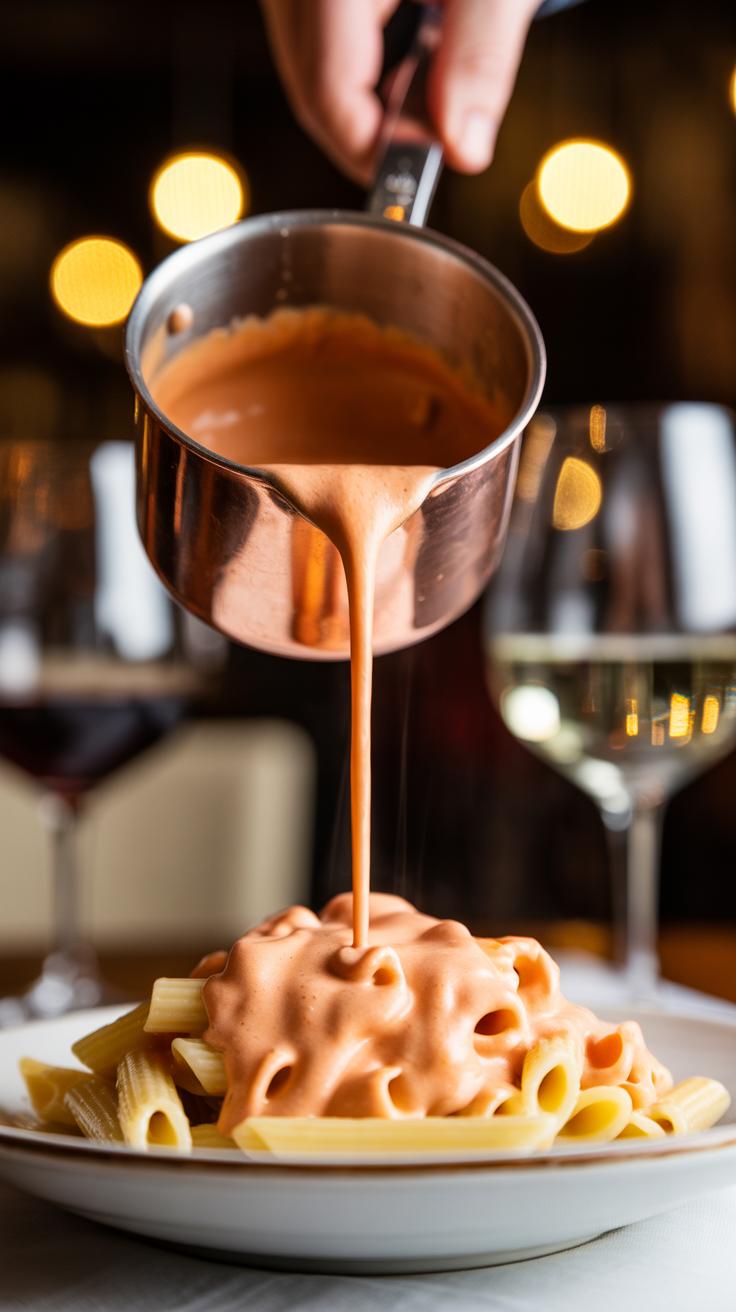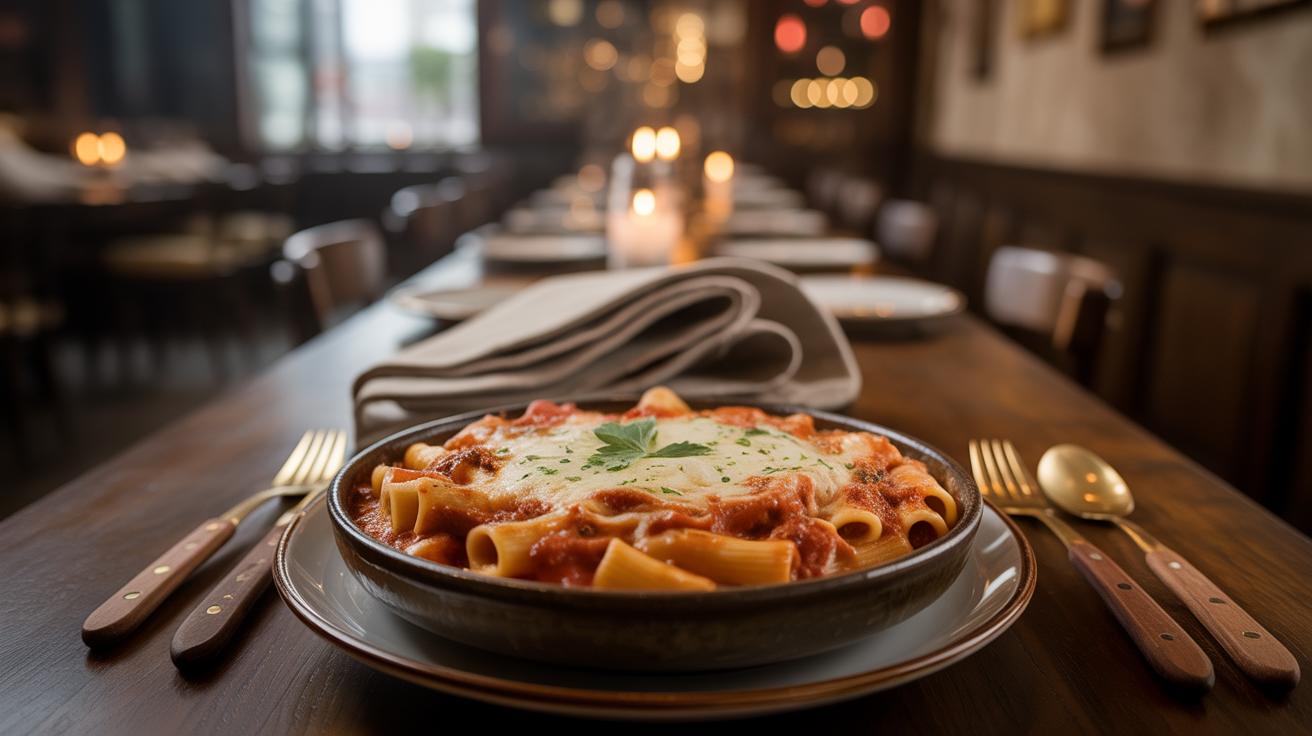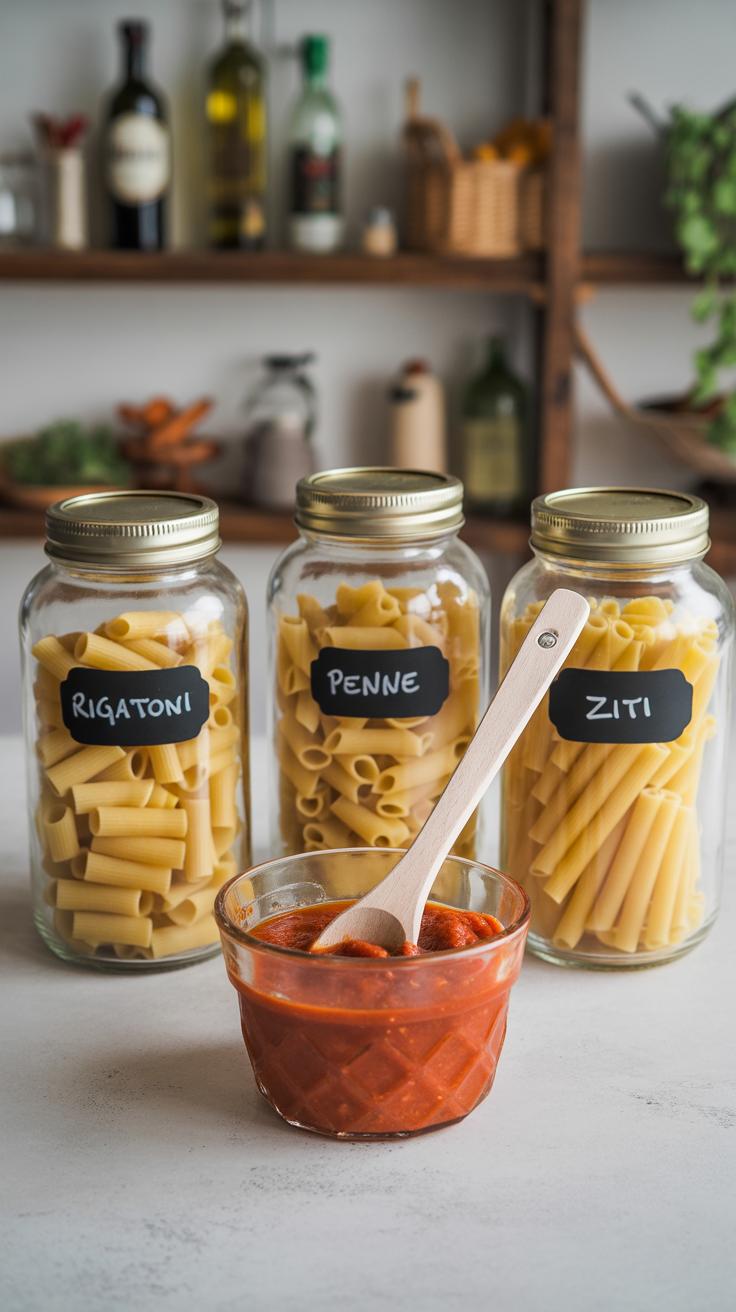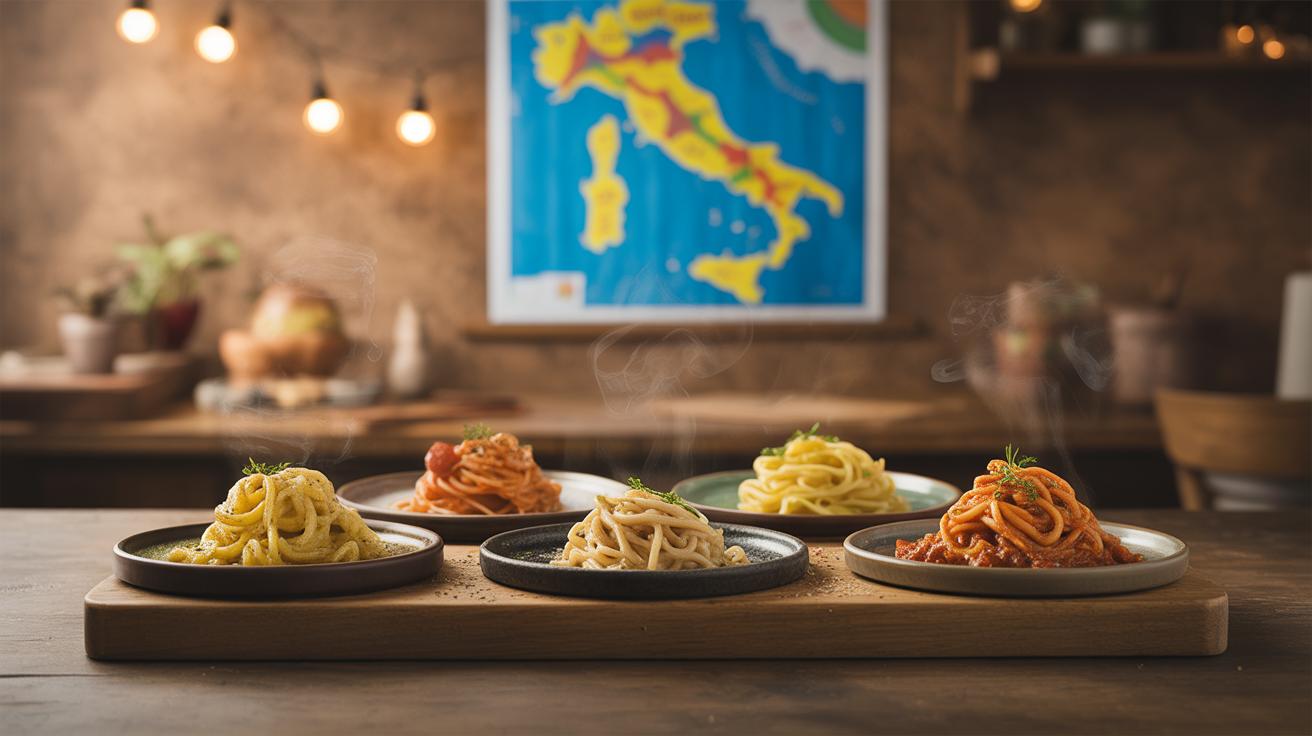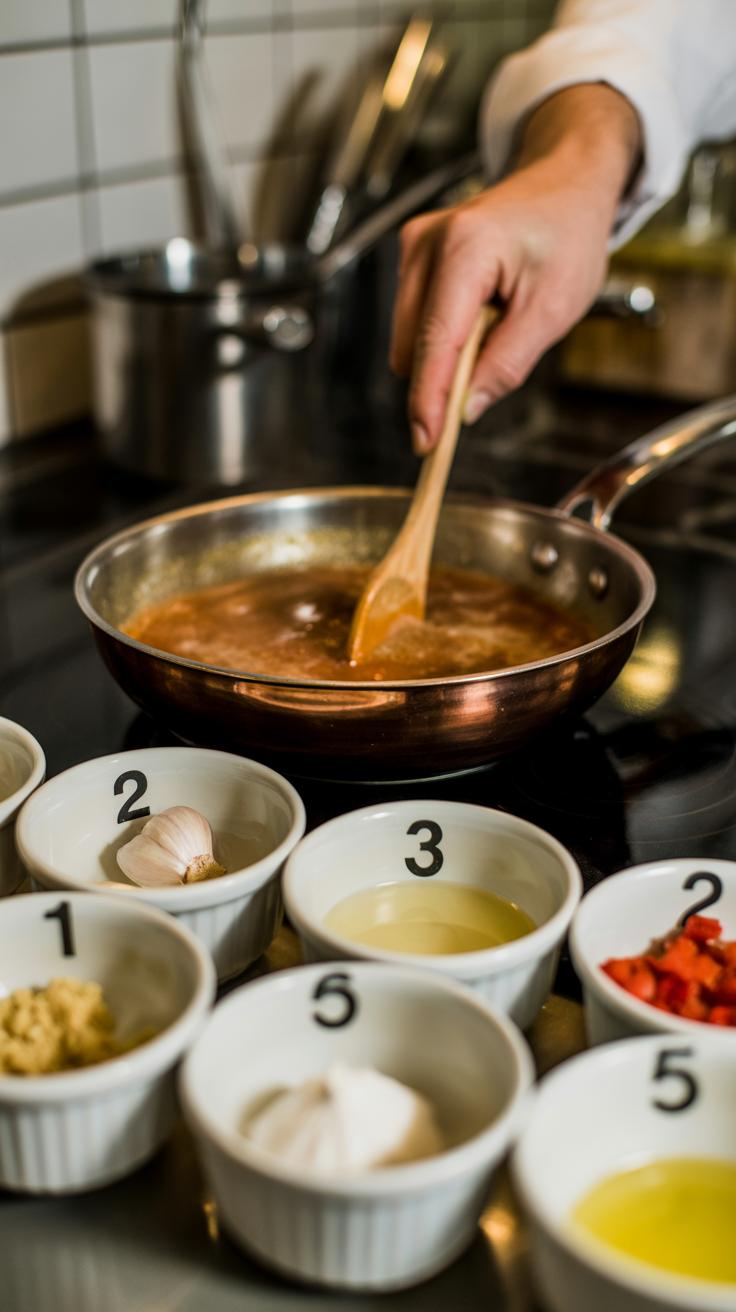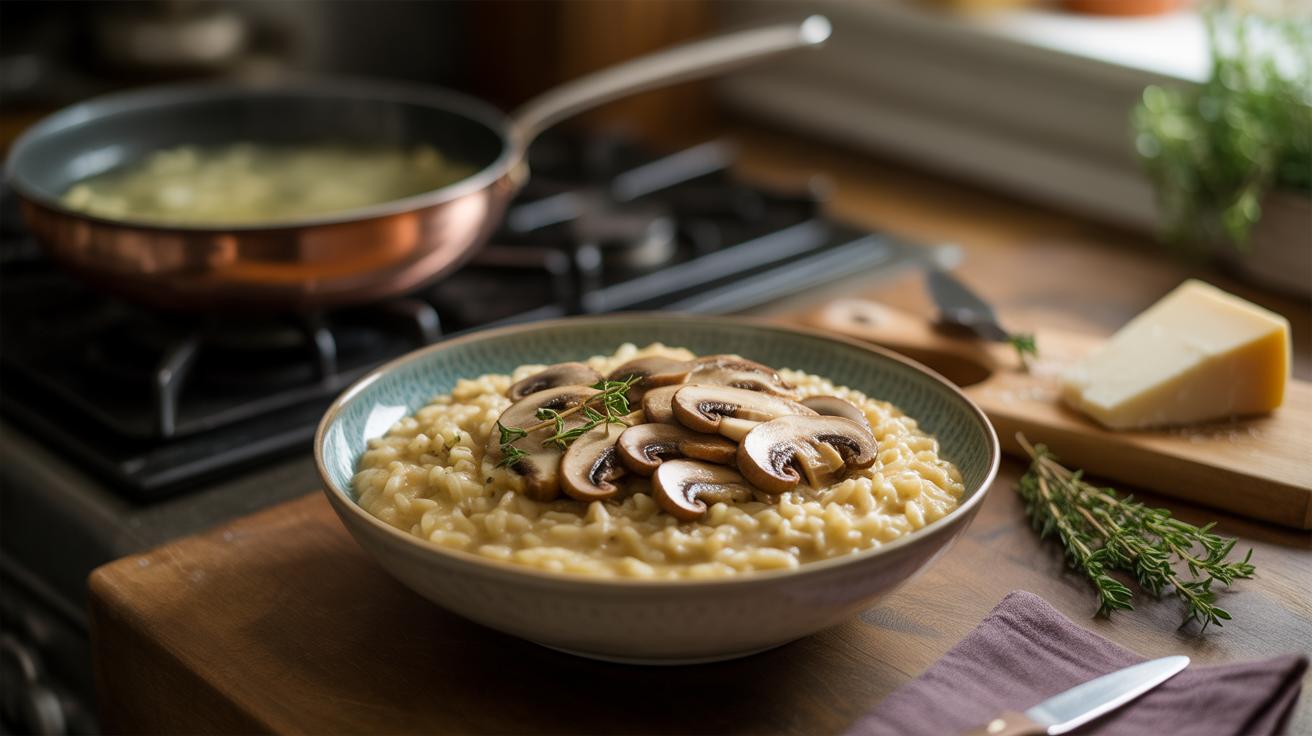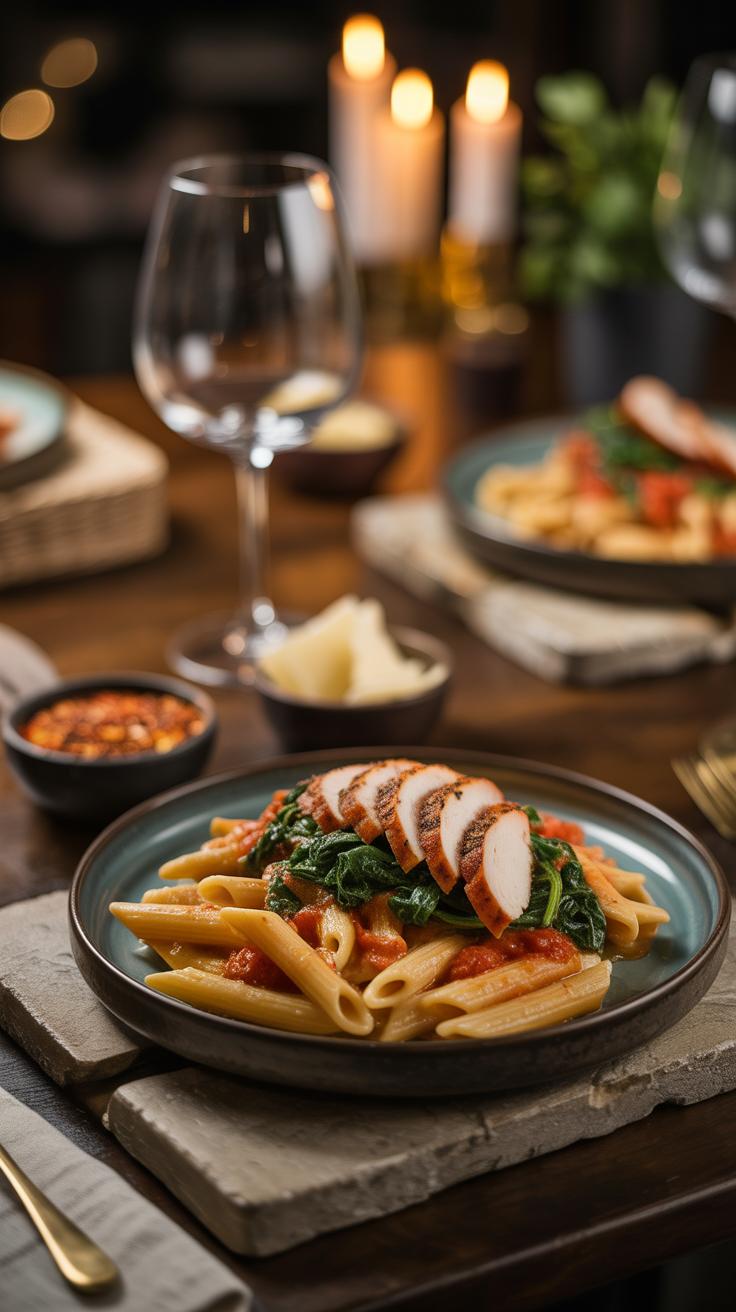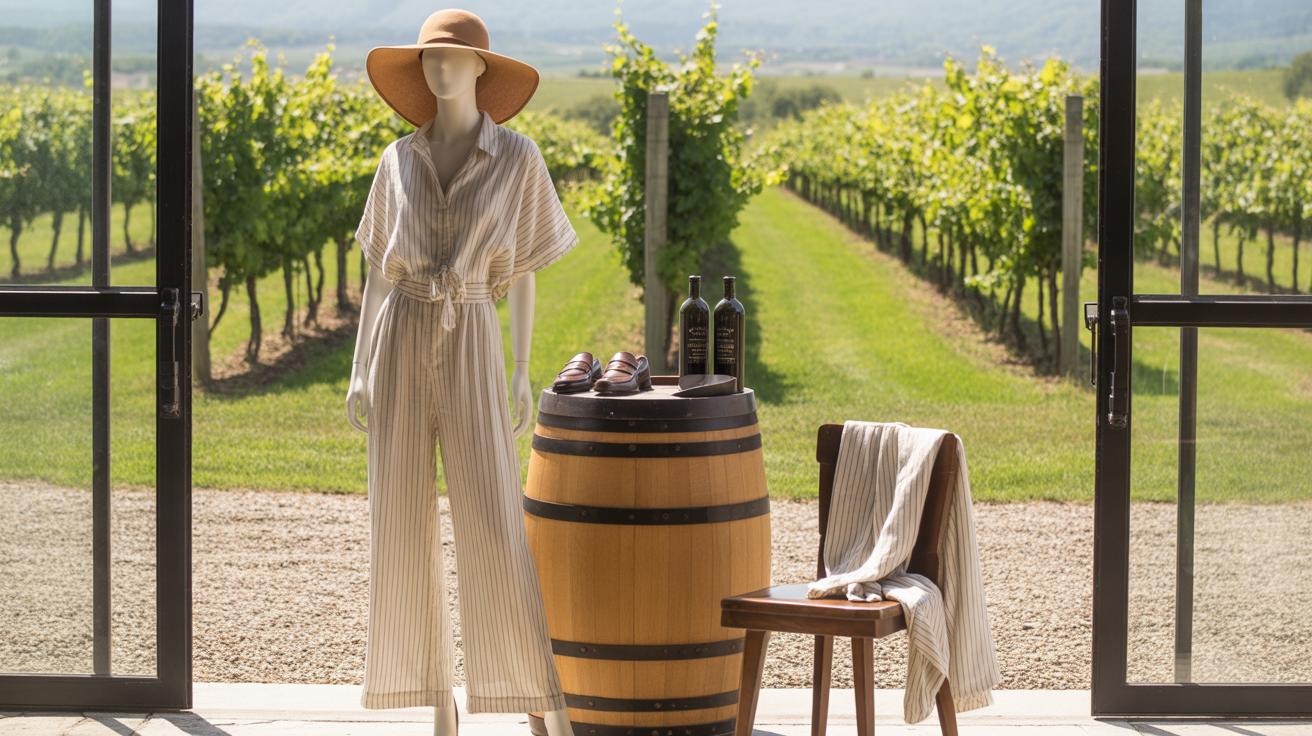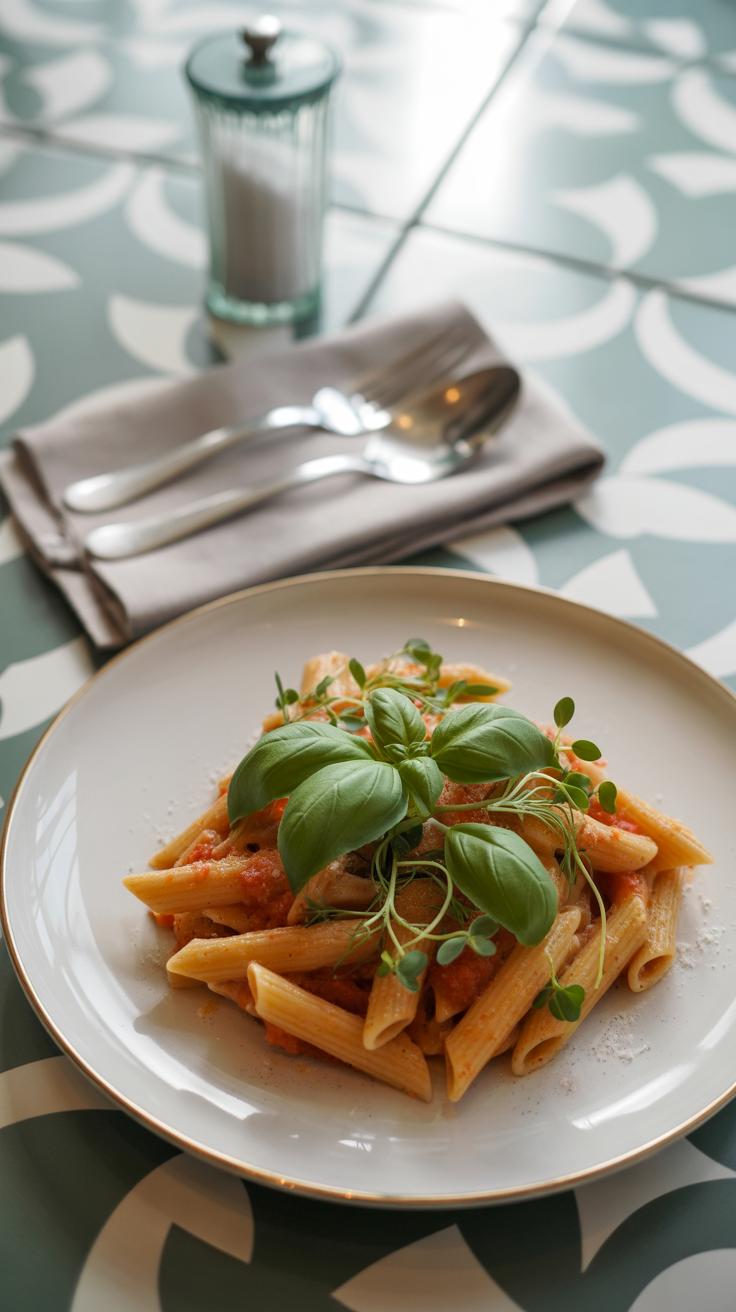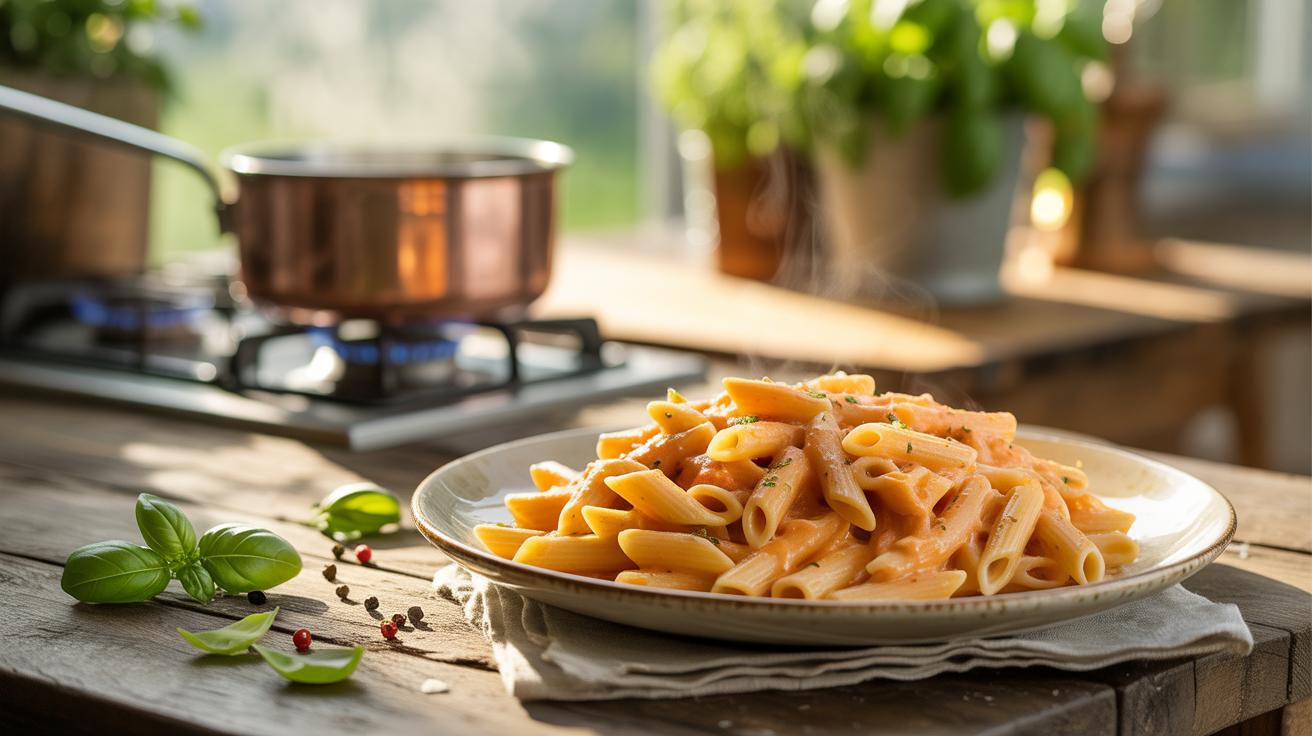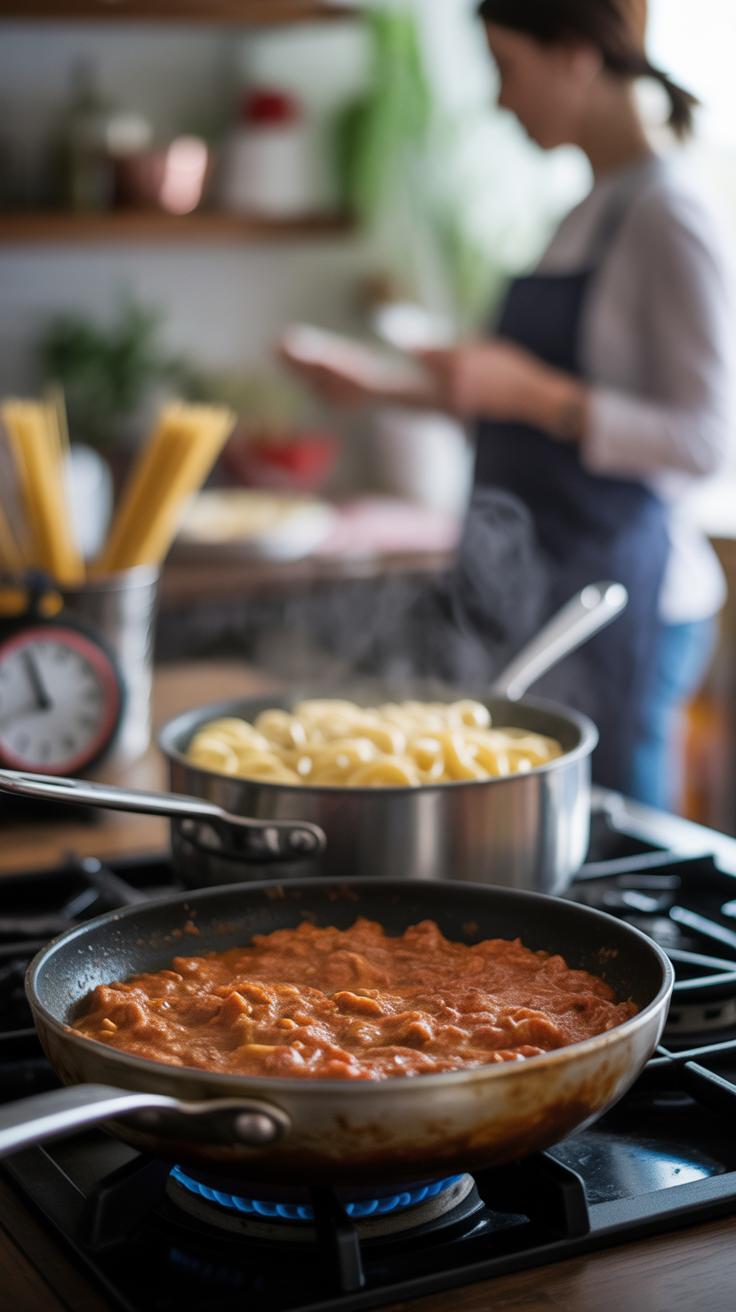Introduction
Penne alla vodka is a classic Italian-American dish that combines penne pasta with a creamy tomato and vodka sauce. This dish has gained popularity since the 1980s, cherished for its rich and smooth flavors. The vodka adds a unique element that helps blend the tomato and cream to create an unforgettable sauce.
This article will explore authentic recipes for penne alla vodka. You’ll learn about its origins, the key ingredients, and how to prepare the perfect sauce. Whether you’re planning an Italian night or simply want to try something new, this guide will help you bring a taste of Italy to your table.
The history and origins of penne alla vodka
The exact origins of penne alla vodka remain a bit hazy, which makes the dish all the more intriguing. There’s no single story that all agree on, but most trace its rise to broader fame in Italy and the United States during the 1980s. The first recorded mentions come from Italian cookbooks and restaurant menus around that time, yet no one can pinpoint who really invented it.
Some say it first appeared in Rome, others insist it came from Northern Italy. A handful of Italian chefs and restaurants claim credit, but facts remain scarce. You could almost say this dish grew organically, with various cooks experimenting with vodka in tomato sauces. The mix of cream, tomatoes, and vodka stirred curiosity with both Italians and Italian-Americans.
Its popularity in the ’80s US was possibly tied to Italy’s disco culture and nightlife. The bubbly vibe of that era seemed to match penne alla vodka’s rich and smooth taste. It went from something you might find in a tucked-away trattoria to a staple in Italian-American households. So, even if its invention story is a bit muddled, its appeal is clear—and enduring.
Key ingredients that define authentic penne alla vodka
Penne alla vodka revolves around a handful of simple ingredients, each playing a distinct role. Starting with penne pasta—the name says it all—this tubular pasta shape holds the sauce well, capturing every bit of flavor in its ridges and hollow center. It’s not just about texture; penne has a bite that balances the creaminess of the sauce perfectly.
Tomatoes form the backbone. Often, crushed or finely pureed tomatoes are used, providing acidity and sweetness. This acidity cuts through the richness later added by the cream, making the dish feel bright rather than heavy. Fresh, ripe tomatoes are ideal, but canned ones can work if you choose high quality.
Cream adds that silky smoothness, softening the tomatoes’ tang and lending a luxurious mouthfeel. It’s not heavy cream you want but something with enough fat to enrich without overwhelming. The cream and tomatoes merge into that signature sauce, rich yet balanced.
Vodka might sound unusual here, but it’s crucial. It helps meld the cream and tomato, creating an emulsified texture, and it lifts flavors you might not even realize are there. Most of the alcohol burns off early in cooking, leaving behind subtle complexity rather than a strong booze taste.
Finally, Parmesan cheese brings a salty, nutty background note. Freshly grated Parmesan melts into the sauce, boosting depth and adding a savory counterpoint. You don’t want pre-grated stuff here; real cheese makes a noticeable difference.
When you put these ingredients together—good penne, ripe tomatoes, just-right cream, quality vodka, and real Parmesan—you get the essence of penne alla vodka. It’s simple but precise. Each element matters, and missing one often leaves the dish feeling incomplete or flat. Picking the right components can be a bit of trial and error, but it’s worth the effort.
How vodka sauce brings richness and balance
Vodka sauce has this unique way of combining cream and tomato into a velvety, unified sauce. The vodka itself doesn’t dominate the flavor—it acts more like a connector, helping to meld the acidity of the tomatoes with the smoothness of the cream. This creates an emulsified sauce that feels almost silky on the palate. You might wonder why vodka? It briefly loosens the tomato’s natural tang without overpowering it, so you end up with richness that feels balanced rather than heavy.
Think of it as a gentle mediator between the sharpness of the tomato and the softness of the cream. The sauce achieves a melt-in-the-mouth texture that coats your penne without leaving a greasy film. It’s this texture that really sets vodka sauce apart, giving you that comforting, luscious mouthfeel with every bite.
Texture and flavor harmony
It’s striking how the sauce captures both richness and lightness at once. The cream tempers the acidity, but without dulling the tomato’s brightness. And the vodka? Well, it subtly intensifies the tomato flavor while keeping the creaminess from feeling overwhelming. The result is a smooth, balanced sauce that clings beautifully to pasta.
Some cooks say the secret lies in the simmering time—you want just enough heat to marry the ingredients but not so much that the cream breaks or the vodka burns off entirely. When you get this right, the sauce feels like silk draped over your penne, with a flavor that lingers but never overwhelms.
Variations of vodka sauce
There are cousins to vodka sauce that you might run into. Parma rosa, for example, blends tomato and cream like vodka sauce but skips the vodka altogether, offering something a bit more straightforward. Rosatella is another, with a similar creamy tomato style but sometimes a bit lighter and brighter depending on the recipe.
If you’re feeling adventurous, you can try spicy vodka sauce—little chili flakes or hot pepper infused in the mix add a sharp kick that wakes up the dish. This variation highlights how versatile vodka sauce can be, bending to taste but always keeping that crucial balance of creaminess with tomato’s tang.
Have you ever tried adding a pinch of crushed red pepper? It changes the dynamic so much—you get the richness but with an energetic spark you didn’t expect.
Choosing the right pasta for your vodka sauce
Penne is the classic choice for vodka sauce, and there’s a good reason for that. Its tubular shape and ridged surface catch the creamy sauce beautifully, letting every bite deliver that rich flavor. You might find it holds the sauce better than smooth or flat pastas, like linguine. The little pockets inside the tubes trap just enough sauce, offering a balanced mix between pasta and sauce that I think many find satisfying.
Still, there’s room to experiment if penne isn’t available or you want something different. Rotini, with its spiral grooves, grips the sauce in a similar way. Bow tie pasta can work too; its folds create nooks for sauce to cling to, though the eating experience is a bit different—less about hollow tubes, more about surface texture. Linguine or even fettuccine can carry vodka sauce well if you prefer a thinner, silkier mouthfeel, but they don’t hold onto the sauce quite as firmly.
- Penne’s ridges and hollow center make it ideal for creamy vodka sauce.
- Rotini’s spirals function similarly, good for capturing sauce in each twist.
- Bow tie’s folds offer a textured alternate, though less traditional.
- Linguine brings a smoother, more delicate touch, though sauce clings less.
Choosing pasta sometimes comes down to personal texture preference or what’s on hand. I remember trying vodka sauce with rigatoni once—it worked but felt heavier. Penne strikes a nice balance, which may explain its place at the heart of penne alla vodka.
Stepbystep authentic penne alla vodka recipe
Preparing the ingredients
Start by getting everything ready before turning on the stove. For the tomatoes, you can use canned San Marzano tomatoes if fresh ones aren’t quite ripe or in season. Crush them gently with your hands or a fork, leaving some chunks—smooth sauce can be nice but a bit of texture keeps it interesting. Garlic should be finely minced, but don’t overdo it; you want the flavor to be present but not overpowering. For the cream, anything around 20-30% fat works well. It should be cold and ready to go, so it mixes smoothly in the sauce later. Chop a small onion or shallot finely, too, to soften and bring out natural sweetness.
Measure your vodka beforehand; usually, two to three tablespoons do the trick. Some recipes call for more, but too much vodka can mute other flavors rather than enhance. Keep fresh basil or parsley nearby for garnishing later—fresh herbs can change everything.
Cooking and combining the sauce and pasta
Once the ingredients are prepped, start boiling water for the penne. Salt the water well—your pasta should taste like the sea. While the water heats up, warm olive oil or butter in a pan and gently sauté the onion and garlic until translucent. That’s when you add the vodka, letting it reduce slightly to remove the harsh alcohol edge. Pour in the crushed tomatoes, then let the sauce simmer, stirring occasionally. This step takes a bit of patience. The sauce should thicken just enough, not be too watery. Taste along the way; the balance will shift.
Add cream toward the end, off the heat if you want to avoid curdling, or on low heat if you’re careful. Mix thoroughly until you get that creamy pink color typical of penne alla vodka. Meanwhile, cook the penne just shy of al dente, since it’ll finish cooking once combined with the sauce. Drain, reserving some pasta water—it’s handy for loosening up the sauce if it gets too thick. Toss pasta gently in the sauce, letting them marry. Don’t rush this—fold, stir, and coax the sauce to cling perfectly. Serve immediately, maybe with a sprinkle of parmesan or fresh herbs. That’s when everything comes alive on the plate.
Enhancing penne alla vodka with additions
You might wonder if penne alla vodka, with its creamy tomato sauce, truly needs extra additions. Well, the answer depends on your mood and taste. Adding sausage or pancetta can make the dish feel heartier, more complex. These meats bring depth — sausage offers a spicy, savory note while pancetta adds a smoky richness that lingers.
Then there’s the texture factor. Crumbled bacon or peas offer a little something extra—crispy bits or bursts of sweetness that break up the creaminess. I’ve found that peas often lighten the dish enough that you don’t miss more intense toppings.
Vegetables like sautéed mushrooms or spinach fit naturally here. Their earthiness or mild bitterness usually contrasts the sauce nicely, though sometimes the sauce’s flavor convinces you otherwise. Fresh herbs, especially basil or parsley, can freshen the whole plate, but it’s easy to overdo them—too much, and they start to dominate.
Think about what you want: richness, brightness, crunch. Or maybe a balance of all three. And don’t be shy to experiment; sometimes an unexpected addition becomes your favorite way to enjoy penne alla vodka.
Tips for serving and garnishing penne alla vodka
When it comes to serving penne alla vodka, the little details matter more than you might think. A sprinkle of freshly grated Parmesan cheese on top isn’t just tradition—it adds a sharp, salty contrast that plays nicely with the creamy tomato sauce. But don’t stop there: a pinch of cracked black pepper can bring out subtle spicy notes, cutting through the richness without overpowering it.
Choosing Parmesan and pepper as garnishes is about balance and texture. Parmesan melts slightly on the hot pasta, enriching each bite, while black pepper adds a faint heat and complexity. It’s a simple combo, yet it transforms the dish from good to memorable. You might want to keep those garnishes on the side too, letting guests personalize their plates.
For sides, consider something light and fresh to counterbalance the sauce. A crisp mixed green salad with a lemon vinaigrette is a classic for a reason. Garlic bread, toasted just right, works well but doesn’t compete with the pasta’s flavors.
When thinking drinks, I tend toward Italian reds like Chianti or Barbera. Their acidity pairs well with tomato-based sauces without overwhelming your taste buds. If you prefer white, a Pinot Grigio or Vermentino can be surprisingly good. And yes, vodka itself as a cocktail might seem fitting, but maybe stick to wine or sparkling water with a twist of lemon—something that refreshes the palate.
At the end of the day, the best serving and garnishing choices let the penne alla vodka shine and invite your guests to enjoy each bite, their own way.
Common mistakes to avoid when making penne alla vodka
One of the most frequent issues is overcooking the pasta. It’s tempting to let it soften beyond al dente, especially when you’re focused on that rich sauce. But softer pasta will lose the firmness that contrasts nicely with the creamy sauce. Try to time the pasta so it finishes just as the sauce is ready. If the pasta sits too long after draining, it might get mushy, which takes away from the dish’s texture.
The sauce itself can be tricky. I’ve seen people add too much cream or pour in vodka without giving it time to reduce. Both lead to a watery or one-dimensional sauce. The sauce might even break if the heat is too high when you add cream. Stir gently, keep the heat moderate, and be patient; this keeps the sauce smooth and velvety. Tasting as you go helps balance acidity from the tomatoes and the richness from the cream—skip that, and you risk ending up with a dull sauce.
Sometimes, the vodka is mishandled. It should bring a subtle kick, not overpower the whole dish. Give it a moment to cook off, or you might end up with a sharp edge that masks other flavors. Also, overloading on garlic or chili flakes can disrupt balance, making the dish too pungent or spicy. I guess there’s a sweet spot for everything—too much or too little, and the harmony falls apart.
Overall, careful timing, tempering heat, and a bit of tasting will steer you clear of these pitfalls. But then again, maybe a little messiness in the kitchen is part of the fun, don’t you think?
Enjoying Penne Alla Vodka at Your Italian Night
If you’ve made it to this point, I really hope you’ll give penne alla vodka a try at home. It can be a little surprising how a simple dish—just pasta, tomato, cream, and a splash of vodka—comes together with such depth. Setting this as the centerpiece of an Italian-themed dinner is an easy way to feel like you’re stepping into an Italian kitchen without leaving your house.
Think about the ambience, too. Playing some classic Italian music in the background, like soft mandolin or a little opera, can shift the mood in subtle but meaningful ways. You don’t need anything extravagant: maybe just a few candles, a checkered tablecloth, or some simple white plates that let the vibrant sauce really pop.
Pairing the dish with a fresh green salad or some crusty bread gives people options, but don’t stress over making it perfect. Sometimes, sharing food, talking about the process of cooking penne alla vodka, and tasting the nuances of sauce and pasta makes the whole experience more rewarding. There’s something about cooking and eating this dish that feels connected to Italian culture, as if the kitchen itself invites a moment to slow down, savor, and sympathize with a tradition that’s both rustic and sophisticated. Have you ever noticed how food can open up little windows into other places and times? Penne alla vodka does that—plus, it’s just good to eat.
Conclusions
Penne alla vodka offers a satisfying experience with its creamy and flavorful sauce that stands out in Italian-American cuisine. The vodka enhances the sauce’s texture and taste, making the dish a favorite on many dinner tables. By understanding the origins and correct preparation methods, you can enjoy this dish just like in authentic Italian restaurants.
Preparing penne alla vodka at home is straightforward, and you can customize it with your favorite ingredients. With fresh tomatoes, quality cream, and the right amount of vodka, you will create a rich sauce that perfectly dresses the penne pasta. Give it a try and enjoy your Italian night with this classic recipe.

